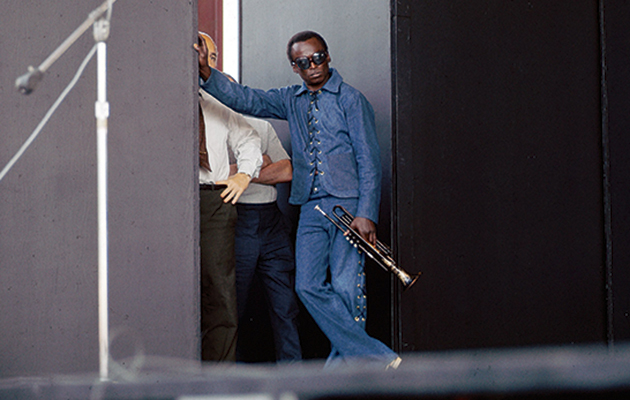Originally published in Uncut’s September 2011 issue (Take 172). Interviews: John Robinson
Playing with Miles Davis, says Jimmy Cobb, the sole surviving member of the trumpeter’s Kind Of Blue quintet, “was a position”. The 82-year old drummer’s view is one shared by all of the musicians interviewed in this survey of Miles’ pivotal albums, be they funky fusioneer or hip-hop producer. The man directed his music boldly, and it was his musicians’ assignment to keep pace while he did so – or risk exposure to Miles’ witheringly laconic sense of humour. Whatever the stylistic changes Miles put his work through, one thing remained constant. Says Jimmy Cobb: “It was the best jazz band in the world.”
_________________
KIND OF BLUE
Columbia, 1959
Produced by Teo Macero, Irving Townshend
A wordy idea (George Russell’s theory, The Lydian Chromatic Concept of Tonal Organisation) helps Miles and band create one of the most accessible and beautiful albums in popular music. Kind Of Blue placed his ideas in settings as calm and progressive as a gallery space. It contains moments of exquisite melancholia and intellectual passion, but over 50 years on, retains its core swing.
JIMMY COBB (DRUMS): Kind Of Blue was a different style: before we were playing structured tunes, show tunes… tunes with a lot of changes in them. This was the exact opposite of that – what you call “modal”, with only a few changes, and scales. Sometimes jazz is kind of complicated for, let’s say, the average person. This was easier for most people to hear. Miles came in with that idea. It was his idea, his and [pianist] Bill Evans – it sounded more to me that it was more in the way that Bill played. If you listen to it you can hear that Bill brought a lot to the sessions. We just got on with it: like Miles would say, “This is a blues”. Or he’d play another tune and say “It’s in 3/4 time. Make it sound like it’s floating…” One time I was making circles on the snare drum with brushes and the engineer said: “Miles, what the drummer’s playing sounds like surface noise.” So Miles said: “That’s part of it…”
John [Coltrane, sax] was a conscientious guy – he was steeped in what he was doing. He was working on something, and he was going to get it. Sometimes he didn’t know how long he was playing for. I recall one time Miles saying to him, “Trane – why don’t you play 27 choruses instead of 28?” Miles loved it, though, or he wouldn’t have let him do it. It was a relaxed business: I was there with all them bad guys – I’m just trying to work out how I’m gonna be around them. I was a little nervous. But not so I couldn’t play.
At that time, my favourite was the blues, “Freddie Freeloader” – the one that Wynton Kelly plays [piano] on. Miles wanted him to play that particular tune. Miles did that at times: he wanted the best person for the best song – at one time he had Coltrane and Sonny Rollins, two tenor players. When Wynton got to the date and saw Bill there, he started to be pissed off. But I told him, “You on the date too, man, don’t go nuts. “I went by Miles’ house to hear it. It sounded good then, like it sounds good now. For me, all the records Miles made sounded good. I never thought it would be this vibrant this long, but I knew it was a good record when we made it. It was the best gig in the world. It was the best jazz band in the world. For anyone to join that band felt it was a… position, you know?



